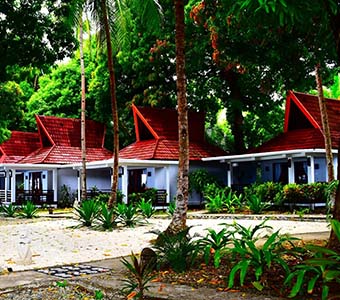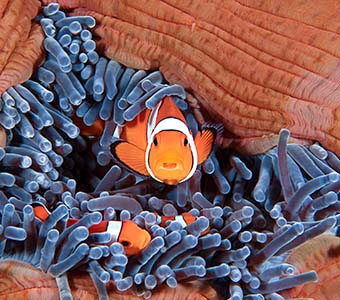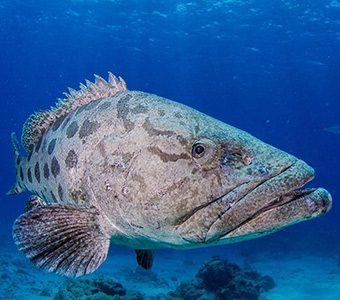Diving Ambon, you’ll discover some of the best macro dive sites in Asia, as Nigel Marsh recently experienced.
Ambon is the gateway port to the Banda Sea, one of the most popular liveaboard destinations in Indonesia. Departing from Ambon divers can explore the Banda Sea’s amazing coral reefs, and even see schooling hammerheads or migrating whales. Most divers joining these liveaboard trips fly in and out of Ambon without stopping and therefore miss some of the greatest muck diving sites in Asia.
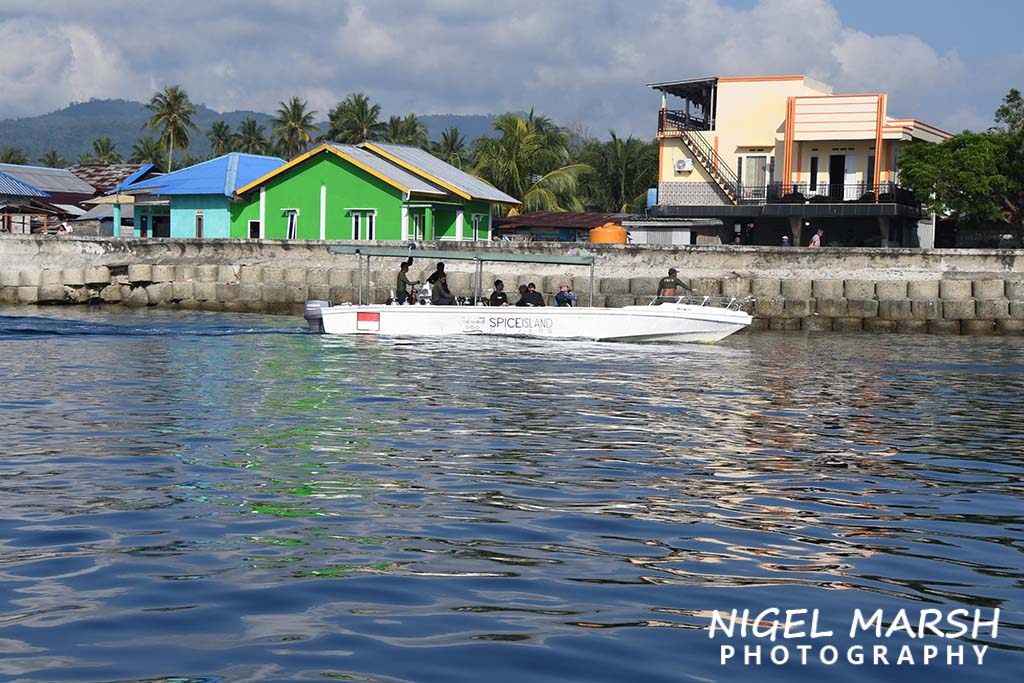
Ambon sits on the shores of a very long and wide body of water called Amboyna Bay. Lined with black sand beaches, and unfortunately a great deal of rubbish, there is great muck diving all around the bay, with around 50 recognised dive sites.
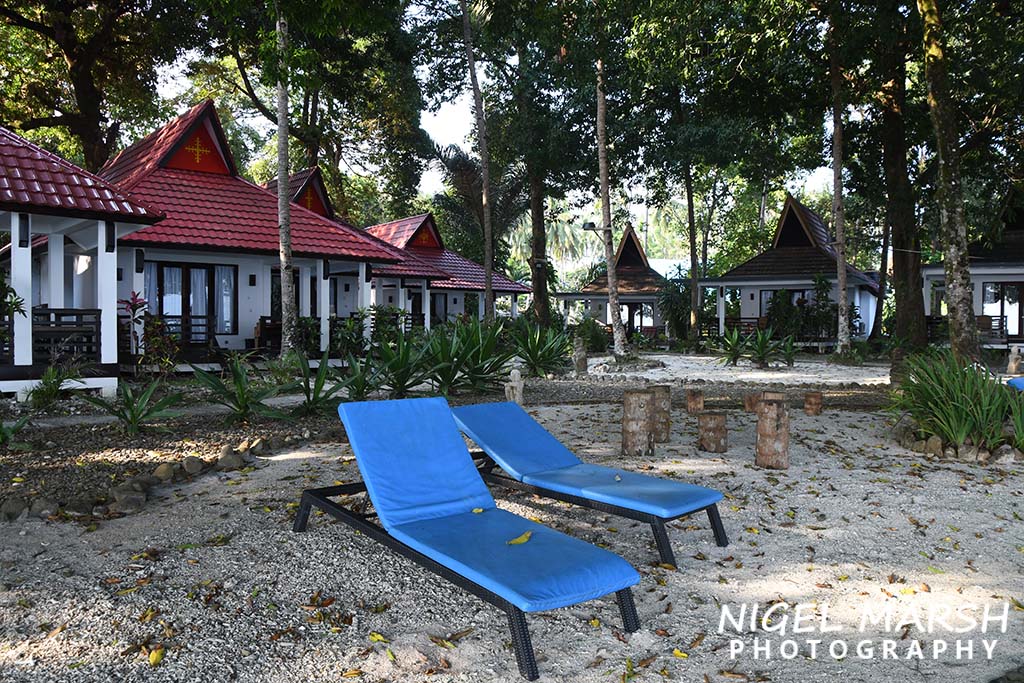
There are a few dive resorts located at Ambon, the best known being Spice Island Divers. This resort is located near the airport and has seafront villas or garden rooms and a fabulous dive centre. They operate a fleet of four dive boats, and the dive centre is well laid-out with washing and drying areas and camera setup room. Meals are included in a package, and the food is excellent.
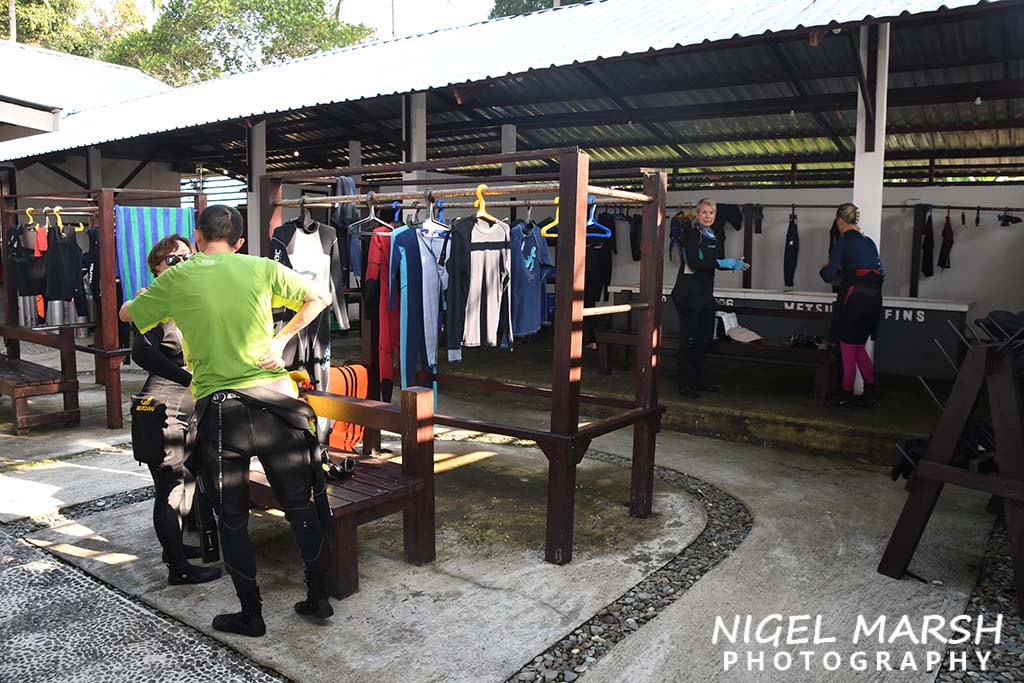
From our very first dive we could understand why the muck diving at Ambon is very highly rated. Laha 2 is only minutes from the resort and is typical of the muck sites in the area, a black sandy slope with the occasional patch of coral and seaweed. Within seconds of hitting the bottom our guide Haris was pointing out harlequin shrimps, mantis shrimps, sawblade shrimps and numerous morays.

During our hour long dive we also found and photographed Coleman shrimps, zebra crabs, demon stingers, fingered dragonets, tobies, porcupinefish, cuttlefish, razorfish, shrimpfish, jawfish, nudibranchs and bent stick pipefish. The visibility was a very respectable 12m and during our stay it varied from 10m to 15m plus.
Each day Spice Island Divers schedule four dives, a double dive in the morning, a single afternoon dive, and finally a night dive or blackwater dive. Our first night dive was sensational at the nearby Air Manus Jetty. There was no jetty to be seen, but the black sand slope was overloaded with critters.
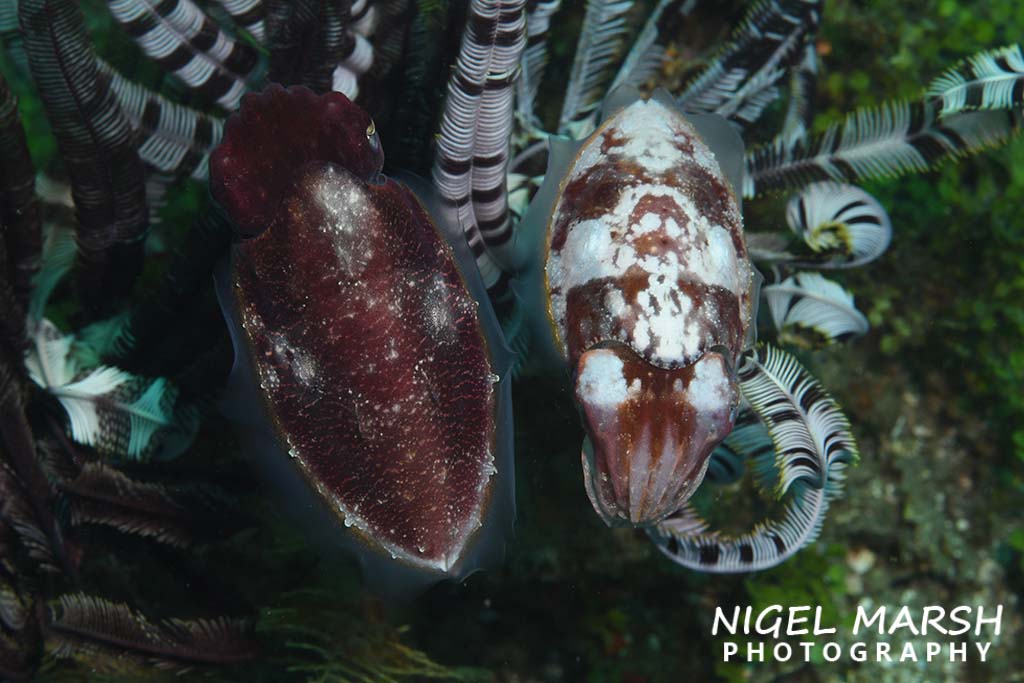
The cephalopods were out in force, including longarm octopus, coconut octopus, starry night octopus, Berry’s bobtail squid, juvenile broadclub cuttlefish and two flamboyant cuttlefish. We also encountered ghost pipefish, morays, warty frogfish, scorpionfish, lionfish, flatheads, crabs, shrimps and flatworms. Numerous shells were out hunting for food, as were a wide variety of nudibranchs and other sea slugs.
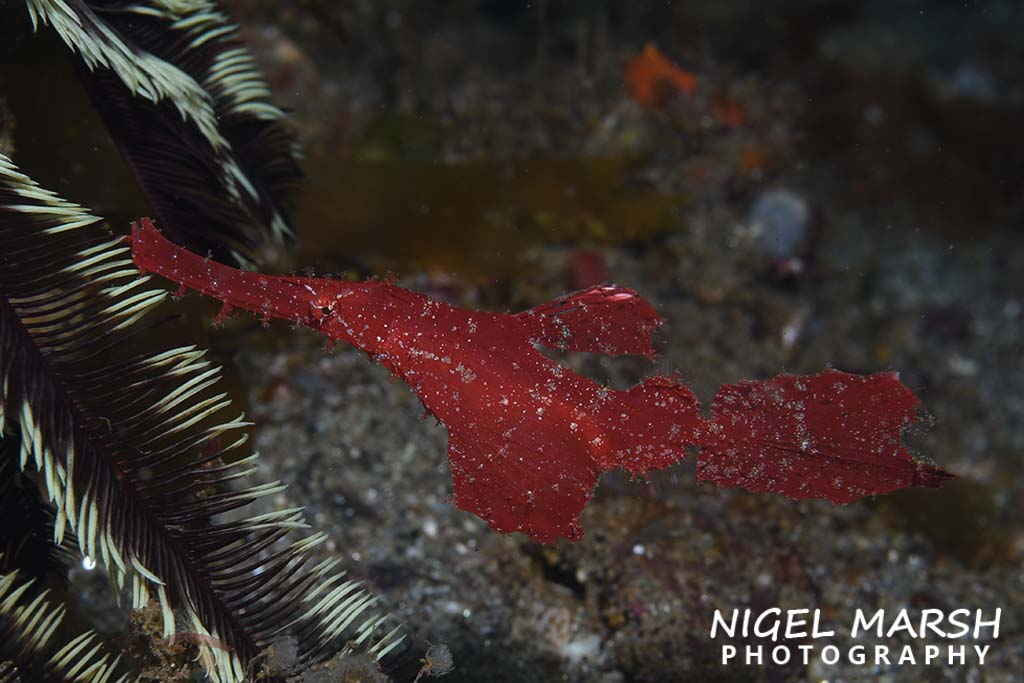
Almost every muck critter that you can imagine can be found at Ambon, and if you have any special requests the dive guides are sure to know the dive site to find it. Unfortunately, our special request was a little hard to fill, the legendary psychedelic frogfish. This unique frogfish has only been found in the Ambon area, although they are very elusive. Our guides sadly informed us the last time one had been seen was three months previous.

We still had a good look for one of these bizarre frogfish when we headed across to the eastern side of the bay to dive Batu Labang and Tirta Point. At Batu Labang we saw Napoleon snake eels, Pegasus Sea moths, ghost pipefish, cowfish and orangutan crabs. While at Tirta Point it was mimic octopus, seahorses, Ambon scorpionfish, pipefish, jawfish and a hairy frogfish.

On our second day we dived Ambon’s most famous muck site – Twilight Zone. This was one of the first muck sites explored in Ambon, and when first dived in the 1990s divers couldn’t believe the animals they were seeing and thought they were mutant mud animals!
The sandy slope at Twilight Zone has lots of rubble, which provides shelter for reptilian snake eels, snowflake morays, porcupinefish, stonefish, and harlequin shrimps. Our guide Haris also found two delicate boxer crabs, that were both carrying eggs attached to their legs.
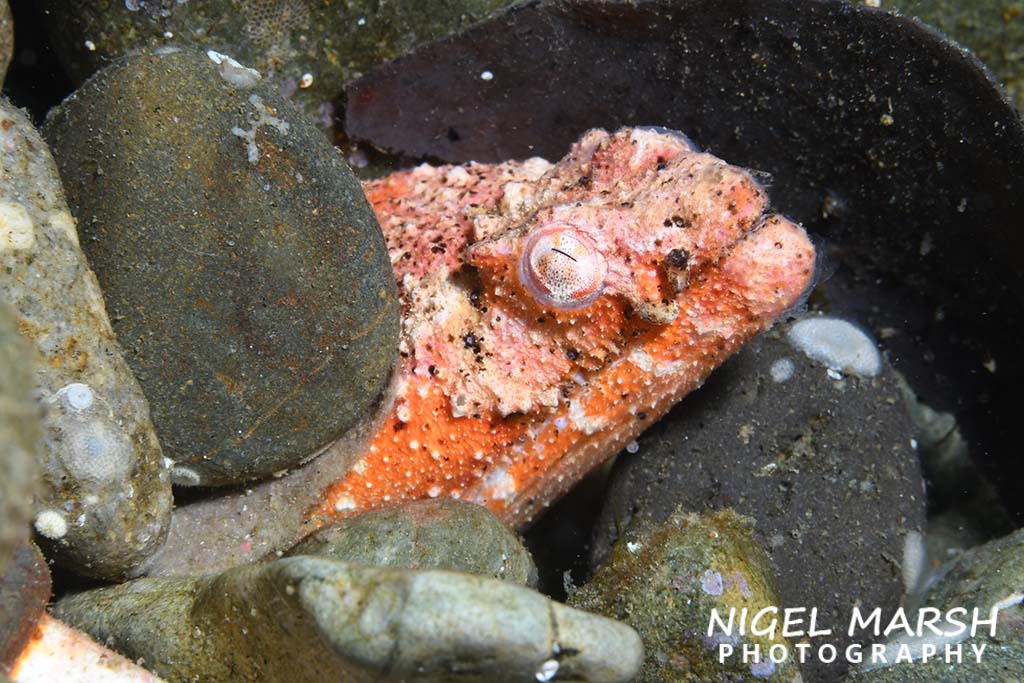
We did three dives at Twilight Zone, and each time we saw completely different critters. Over these dives were saw painted frogfish, warty frogfish, whiteface waspfish, sea snakes, longhorn cowfish, mantis shrimps, flamboyant cuttlefish, algae octopus, sea moths, seahorses, and a group of bigfin reef squid laying eggs. There were also four freckled frogfish hiding in the corals attached to a derelict boat.
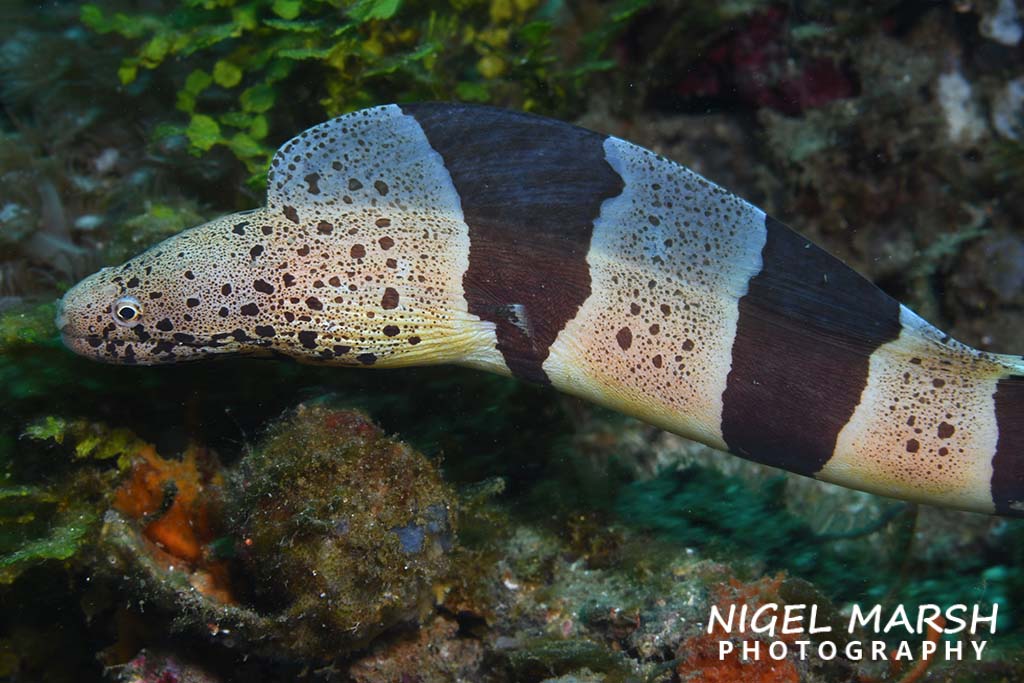
Over our five-day stay we only sampled a handful of the amazing muck sites of Ambon. However, some of the highlights included two weedy scorpionfish at Kampung Baru, solor-powered nudibranchs at Rhino City and a pair of rare Honshu pipefish at Laha 2.
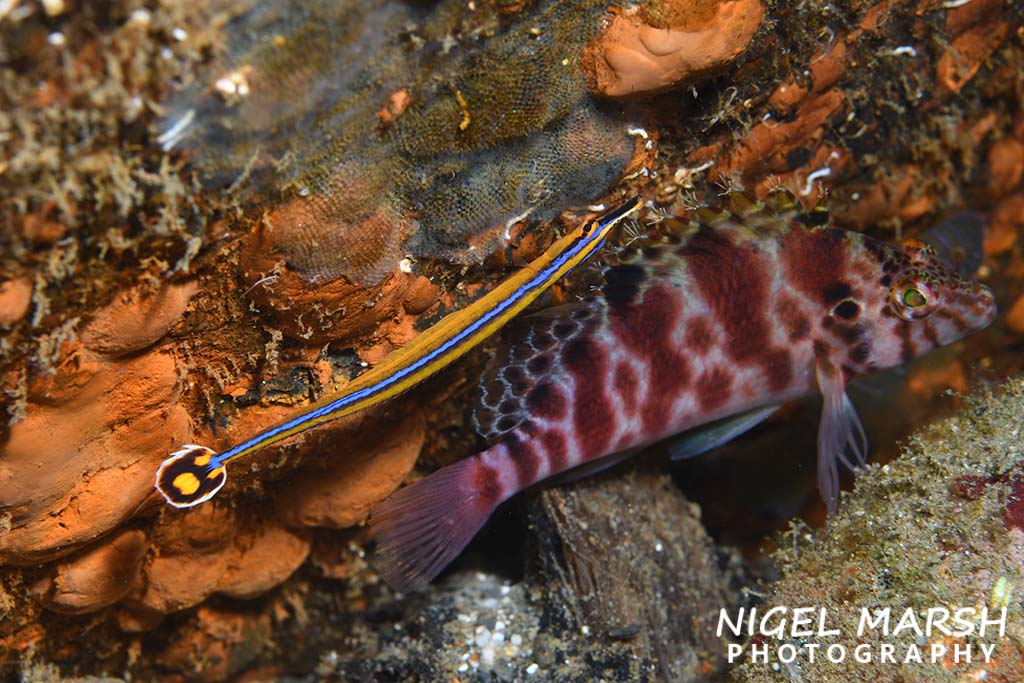
We were very impressed with the muck diving at Ambon and found it equal to the best at Lembeh. We are now planning a return visit to sample more of Ambon’s heavenly muck sites and hopefully next time see a psychedelic frogfish.
If you want to know more about the best muck diving destinations in the Indo-Pacific region, Nigel Marsh has produced the book – MUCK DIVING. This comprehensive guidebook looks at all the great critters you can see muck diving and the best muck diving sites in Asia and Australia. It is available in book shops in Australia and on-line.

